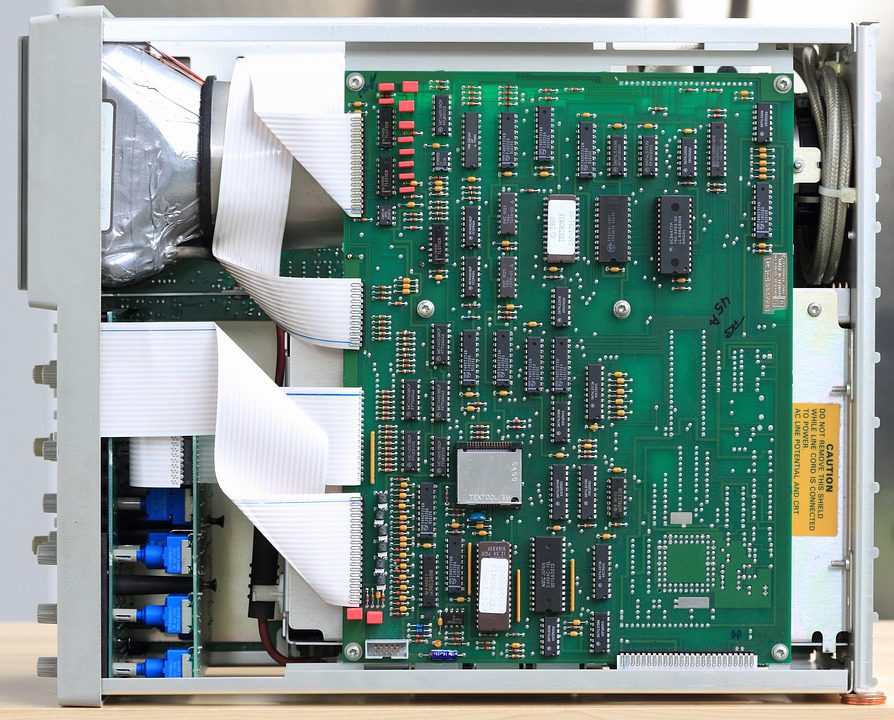Printed circuit boards or PCBs undergo a lot of abuse. Besides accumulating dirt and dust that can easily penetrate components of industrial machines, smartphones and other devices, they’re prone to the soaking and splashing from the liquids they occasionally come in contact with. Hence, a PCB cleaning technology industry has emerged to provide thorough cleaning for PCBs coated with contaminants and those with corroded solder joints.

(Pixabay / olafpictures)
The challenge is to deliver an effective cleanse without damaging the PCB’s circuit. That’s why, in this article, we’ll present you with a list of the best PCB cleaning technologies. The impact of cleaning has a direct effect on the reliability, functionality, and the electrical performance of the printed circuit board.
1) Manual cleaning
This is the most common way to clean a printed circuit board. The benefits of using this method are simplicity, flexibility and low investment (no high-tech equipment is required). The drawbacks are inconsistent quality and low efficiency.
Taking the manual route, you can use a small brush (like a horsehair paint model) to eliminate dust and dirt without harming your PCB’s components. A limitation, however, is associated with where even the tiniest brush can reach, such as at the bottom of the board.
It’s also important to remove the tacky grime that often results from high-temperature operations.
Fortunately, a cleaning agent like IPA (isopropyl alcohol), a small brush and a Q-tip can remove most grime. A solvent like an isopropyl alcohol should only be applied in a well-vented area, like beneath a fume hood.
Several PCB cleaning agents are commercially available besides isopropyl alcohol, ranging from “acetone” to chemicals created explicitly for cleaning PCBs.
2) Water and semi-water cleaning
When it comes to water cleaning tech, you can either use a non-rosin flux cleaning solution that’s water-soluble or an aqueous solution saphonifier. Semi-water cleaning, on the other hand, involves the use of a solvent. The latter is a type of automatic cleaning process.
The primary reason behind most PCB manufacturers’ preference for semi-water cleaning is that it doesn’t require the user to change solder resists used in current processes. It, therefore, has minimal to zero impact on the production line.
Many vendors in the U.S. utilize semi-water technology, while Japan’s PCB cleaning processes consist of 25 to 30 percent electronic processes.
You can also combine the semi-water operation with an industrial-grade cleaning agent to eliminate inorganic and organic pollutants like resistance flux, rosin and solder paste from the printed circuit board’s surface. Aside from the fact that this technology isn’t suitable for some adjustable resistance devices, it’s the best way to achieve high cleaning efficiency and quality.
3) Ultrasonic cleaning
Ultrasonic machines make use of high frequencies to produce cavitation (the implosion of several billion minute bubbles inside the solution present in a cleaner tank). Transducers attached beneath the tank create these bubbles, which are then excited by ultrasonic frequencies. Ultimately, the implosion wipes away the contaminants on the surface of the components that are being cleaned.
This technology has some downsides, including the fact that it can loosen connections and even harm parts of the circuit, along with accumulating grime and dust. NASA even issued a directive that indicated that ultrasonic cleaning could inadvertently produce component end caps’ separation and damage the bond wire pads.
Still, the PCB cleaning industry has room for ultrasonic cleaning tech. This particular method can reach even the hardest of places like below high-density parts on almost any component of a PCB. This doesn’t apply to SMD gadgets that feature gaps smaller than the surface coefficient of the agent. With that said, ultrasonic cleaning is fast, and vendors have a multitude of high-capacity units available to address a range of cleaning needs.
A clean printed circuit board is a durable, efficient board. If you plan on using your PCB for more than a couple of years, apply one of the cleaning methods mentioned above to keep it well-protected.
